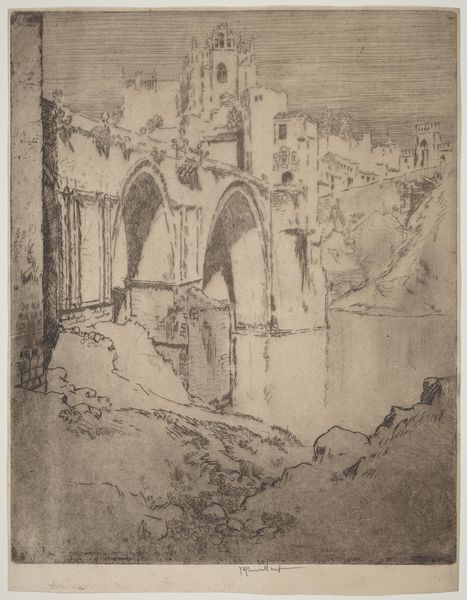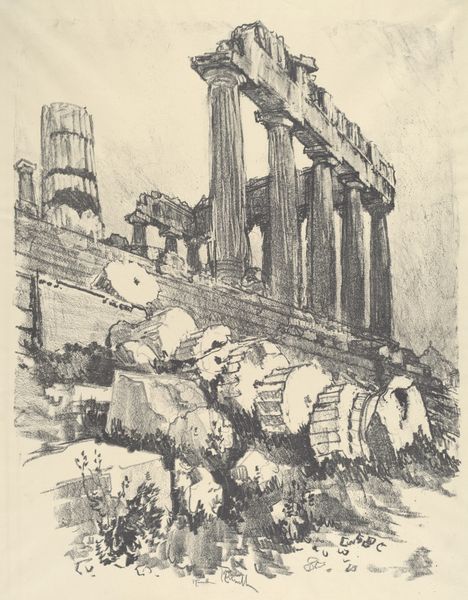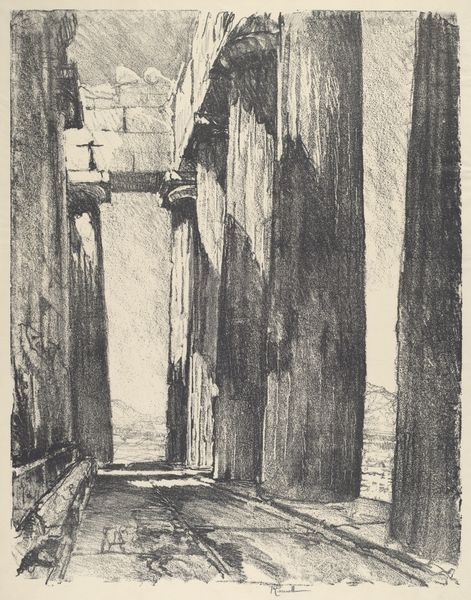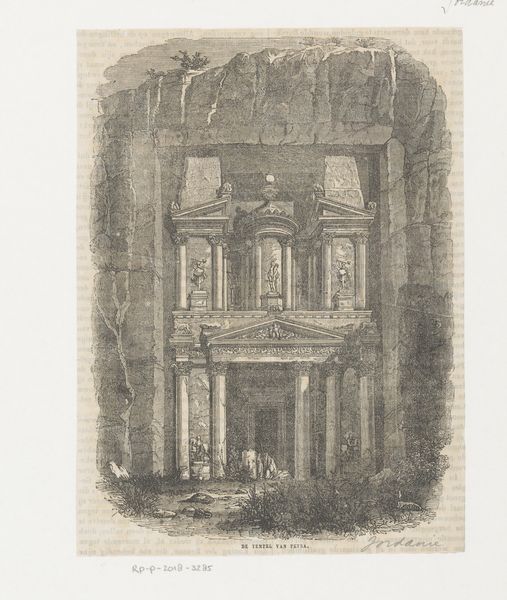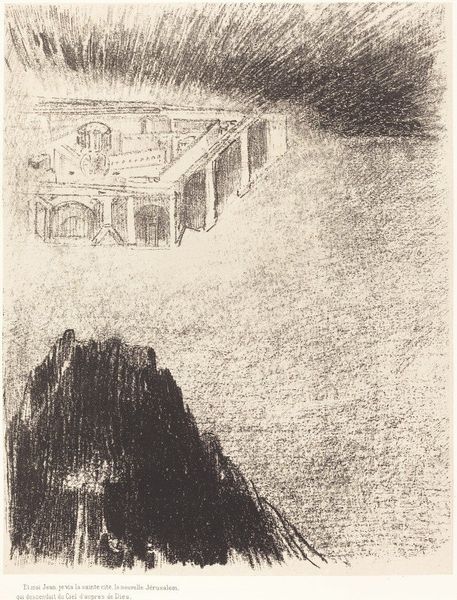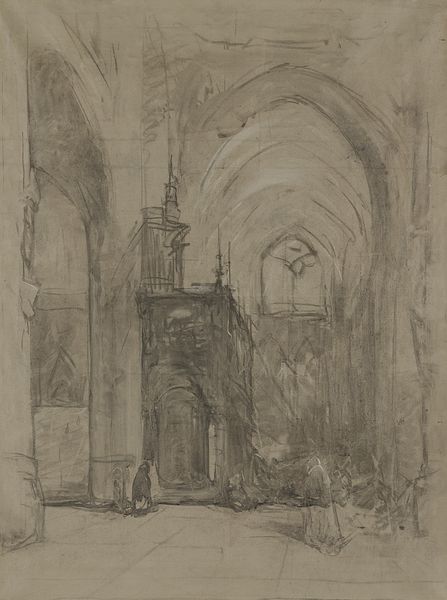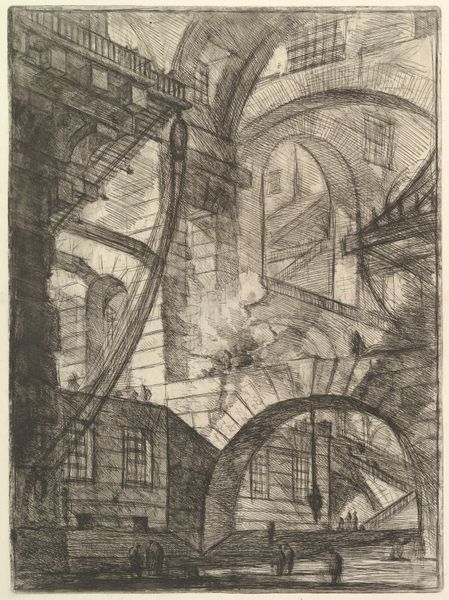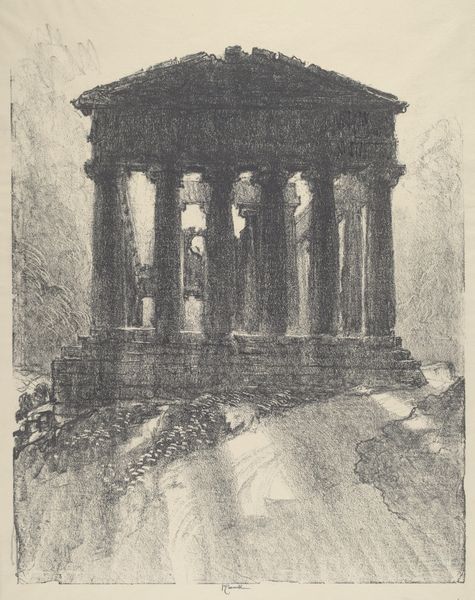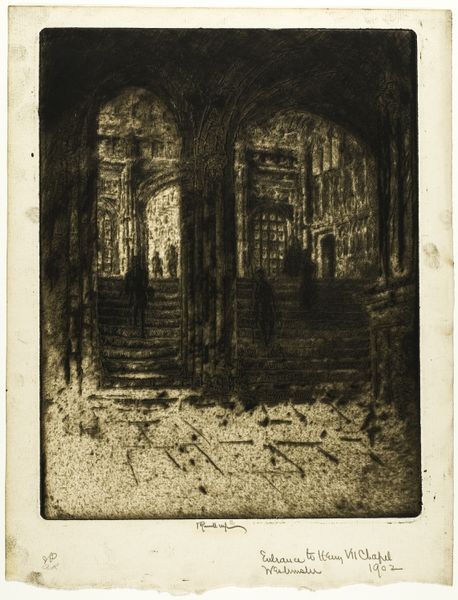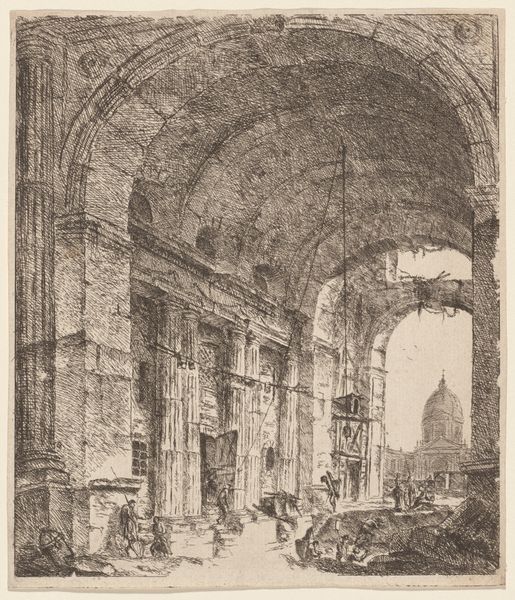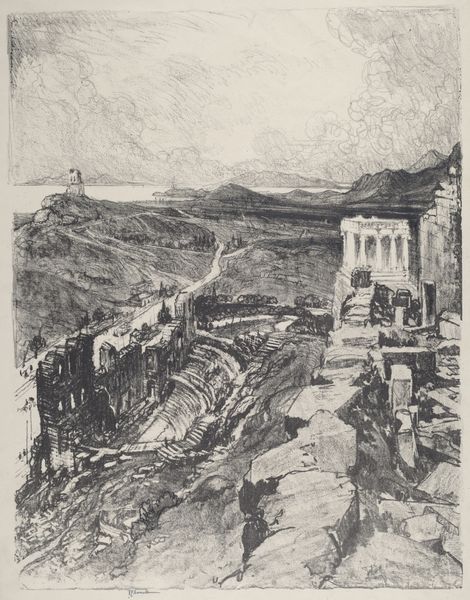
drawing, print, pencil, graphite
#
drawing
# print
#
pencil sketch
#
greek-and-roman-art
#
landscape
#
classical-realism
#
ancient-mediterranean
#
pencil
#
graphite
Copyright: National Gallery of Art: CC0 1.0
Curator: Joseph Pennell's 1913 graphite drawing, "The Way up to the Acropolis", immediately strikes me. The stark contrasts between light and shadow evoke a strong sense of the passage of time and, frankly, a looming darkness. Editor: Indeed, the dramatic lighting lends it a certain gravitas. Thinking about the materials – graphite on paper – it makes me consider the accessibility of this medium. Graphite, a common material, allows for the widespread depiction and consumption of such a historically loaded site as the Acropolis. It democratizes the image, so to speak. Curator: That’s an interesting angle. But considering the Acropolis itself, its cultural significance is undeniable. For centuries, it has served as a symbol of Athenian democracy, of course, but also a potent symbol of European cultural heritage more broadly. This image, though, seems to focus on the arduous climb, the steps themselves, worn by time and labor. It’s a visual representation of access and exclusion. Editor: I agree; those stairs speak volumes about access. But the way Pennell has rendered them! It almost feels industrial, the repeated lines forming this near-geometric pattern, highlighting the manufactured nature of the pathway. I wonder if the piece subtly comments on the evolving function of such historical spaces: increasingly mediated by tourism and a kind of industrial-scale preservation. Curator: The crumbling architecture hints at that evolution too. The broken columns and the obvious wear signify the decline of empires, but also perhaps, the impermanence of any dominant ideology. The image certainly prompts a discussion about the role of these historical monuments in shaping national and cultural identity. Who gets to claim ownership of the Acropolis, and how does that ownership affect the present? Editor: Right. Consider also that this was made just before World War I. The impending collapse of the old order perhaps mirrors the physical decay depicted in the artwork itself. And how are the reproductions distributed; who controls the narrative surrounding this site? Pennell's print isn’t just an aesthetic representation, it’s a document embedded in a network of power. Curator: Seeing it this way gives the work so much more nuance. The drawing transcends mere landscape depiction and morphs into a potent commentary on history, access, and cultural ownership. Editor: Precisely! Looking through a material lens helps ground the grand narratives often associated with classical monuments and shifts our focus to the means and the messages of its reproduction.
Comments
No comments
Be the first to comment and join the conversation on the ultimate creative platform.

